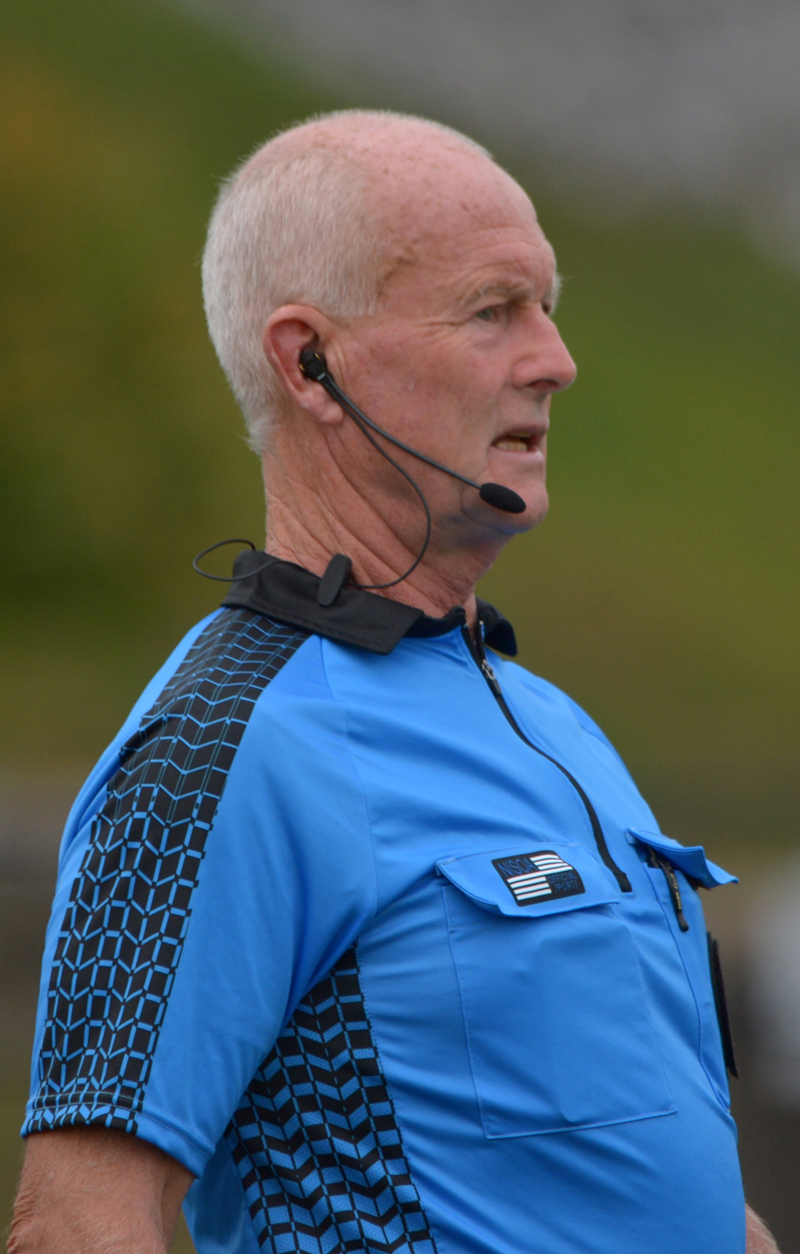
Midcoast Board official Stephen Peats wears an electronic communication device at all soccer games he officiates. (Paula Roberts photo)
Midcoast Board soccer official Stephen Peats says the use of high-tech communication systems by officials is the wave of the future. Peats has been using a “comm system” for four or five years. He estimates that 10% of high school soccer officials now use the system and about 50% of college officials.
Peats uses his communication system at every game he officiates.
“More and more are buying them and getting used to them and learning how to use them,” Peats said.
Although soccer officials use standard hand signals, using a headset “gives you a little more comprehensive view of what your partner is seeing and thinking,” he said.
Peats said European officials first started using radio communication systems during three-man games. Their usage is catching on in the states in a big way.
One way the communication systems make for better efficiency is in substitutions. When a player with a white jersey is ready to substitute, an official can verbally communicate that to his partner. With the verbal communication, an official is less likely to overlook a waiting substitute.
Officials generally make calls in their area. If an official sees something in his partner’s area, he can communicate it verbally. “If I am very close (to the play), I can tell my partner there is nothing there and he will not blow his whistle,” Peats said.
“As partners, you do not tell them what to do, you tell them what you see and let them make their own decision,” Peats added.
Peats said the communication system helps in situations such as offsides. “In offsides, if a defensive player touches the ball, there would be no offsides. Sometimes the official on the far side is a long way away, so I can say there was a touch.” This is particularly helpful in a two-man system.
One drawback is the expense. Peats paid $1,500 for his three-unit set four or five years ago. “They are expensive, so everyone cannot go out and buy them,” he said. “As with all electronic devices, the price will go down and down. As the price goes down, more officials will use them.”
Peats said headsets are particularly helpful for a three-man officiating team, as officials on either sideline can communicate verbally with the official in the middle (and with the whistle) and tell him what they see.
Peats said typically the official in the middle will provide three headsets that are synced to the same radio frequency.
Colleges always use a three-man officiating team. “It is a much faster game is the reason for it,” Peats said.
“The level of refereeing will increase with them. They give you the ability to make a better decision,” Peats said.
The only drawback Peats can see is that officials may get away from using hand signals and rely only on voice feedback. “The only disadvantage is, younger officials will be so dependent on it that they forget hand signals,” he said.
Peats feels the communication system makes for a better-called game. “We need to give these boys (or girls) the best we can and make the best decisions we can, and I think it helps out,” he said.






